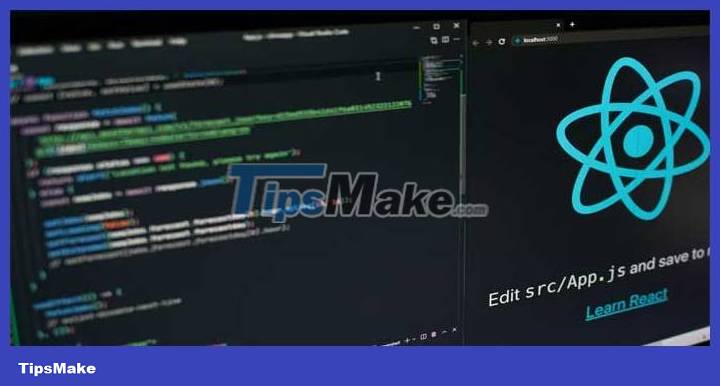How to build and use Mock API in React app using Mirage.js
Don't have an API available? Alright! Let's program and use mock API with Mirage.js .

When developing full-stack applications, much of the frontend work depends on real-time data from the backend.
This means that you must pause front-end development until the API is available for use. However, waiting for an API to be ready to set up a user interface can significantly reduce productivity and lengthen project time.
A great solution to this challenge involves using mock APIs. These APIs allow you to develop and test the frontend with data that mimics real data structures without relying on the actual API.
Instructions for using Mirage.js Mock API
Mirage is a JavaScript library that allows you to create mock APIs, complete with a test server running on the client side of your web application. This means you can test the frontend code without worrying about the availability or behavior of the actual backend API.

To use Mirage.js, you first need to create mock API endpoints and define the response they will return. Mirage.js then intercepts all HTTP requests your frontend code makes and instead returns mock responses.
Once the API is ready, you can easily switch to it by just changing the configuration of Mirage.js.
Create Mock API server with Mirage.js
To demonstrate how to set up a mock API, you'll build a simple to-do React app using the Mirage.js backend. But first, create a React app using the create-react-app command. Additionally, you can use Vite to set up a React project. Next, install the Mirage.js dependency.
npm install --save-dev miragejsNow create a Mirage.js server instance to intercept requests and simulate API responses, using the createServer method . This method takes a configuration object as a parameter.
This object includes the environment and namespace for the API. This environment defines the development stage of the API, such as development while the namespace is a prefix added to all API endpoints.
Create a new src/server.js file and include the following code:
import { createServer, Model } from 'miragejs'; const DEFAULT_CONFIG = { environment: "development", namespace: "api", }; export function makeServer({ environment, namespace } = DEFAULT_CONFIG) { let server = createServer({ environment, namespace, models: { Todo: Model, }, }); return server; }If necessary, you can customize the namespace to match the URL structure of the actual API, including specifying the version. This way, once your API is ready, you can easily integrate it into your front-end application with minimal code changes.
Additionally, in the server instance configuration, you can also define a data model to simulate data storage and retrieval in a mock environment.
Finally, start the Mirage.js server by importing the server object in the index.jsx or main.js file as follows:
import React from 'react' import ReactDOM from 'react-dom/client' import App from './App.jsx' import { makeServer } from './server'; if ( process.env.NODE_ENV === 'development' && typeof makeServer === 'function' ) { makeServer();} ReactDOM.createRoot(document.getElementById('root')).render( , )Add sample data to Mock API
Mirage.js has an in-memory database that you can use to pre-populate mock APIs with initial raw data and manage test data from your client application. This means you can store and fetch test data from the simulation database and use it in the client application.
To add sample data to the Mock API, add the following code in the server.js file right below the models object .
seeds(server) { server.create('Todo', { title: 'item no 1', body: 'Do something nice for someone I care about', }); server.create('Todo', { title: 'item no 2', body: 'Memorize the fifty states and their capitals.', }); server.create('Todo', { title: 'item no 3', body: 'Watch a classic movie.', }); },The seeds function provides the Mirage.js server with three to-do items, each with its own title and description. Optionally, instead of hard-coding the test data, you can integrate a library like Faker.js to generate the necessary test data.
Identify the Mock API roadmap
Now define some API routes for the mock API. In this case, define the route for handling mock API GET, POST, and DELETE queries.
Just below the sample data, add the code:
routes() { this.namespace = 'api/todos'; this.get('/', (schema, request) => { return schema.all('Todo'); }); this.post('/', (schema, request) => { let attrs = JSON.parse(request.requestBody); return schema.create('Todo', attrs); }); this.delete('/:id', (schema, request) => { let id = request.params.id; return schema.find('Todo', id).destroy(); }); }Build React clients
After setting up the mock API, build a React client to interact and use the API endpoints. You're free to use any of your favorite UI component libraries, but this tutorial will use Chakra UI to style the app.
First, install the dependencies:
npm install @chakra-ui/react @emotion/react @emotion/styled framer-motionNext, create a new src/components/TodoList.jsx file , and include the following code:
import React, { useState, useEffect } from 'react'; import { Button, Box, Container, Text, Input, FormControl, Flex, } from '@chakra-ui/react';Now define a functional component to display the to-do list UI, including input fields for adding new tasks and a list of existing tasks.
export default function TodoList() { return ( Todo List {loading ? ( Loading. ) : ( todos.map((todo) => ( {todo.body} )) )} ); }Now define handler functions for adding and removing operations. But first, add these states. Additionally, you can use useReducer to define state management logic for your to-do list app.
const [todos, setTodos] = useState([]); const [newTodo, setNewTodo] = useState({ title: '', body: '' }); const [loading, setLoading] = useState(true); const [renderKey, setRenderKey] = useState(0);Now define the logic to retrieve and display sample data in the in-memory database when the application first loads in the browser by including the fetch method in the useEffect hook .
useEffect(() => { fetch('/api/todos') .then((response) => response.json()) .then((data) => { setTodos(data.todos); setLoading(false); }); }, [renderKey]);The renderKey state is also included in useEffect to ensure that this code triggers the re-rendering of newly added data in the memory database while the server is running.
Simply put, whenever a user adds data that needs to be refreshed to the Mirage.js database - this component will re-render to show the updated data.
Add data to the API
Now define the logic for adding data to the API via POST queries. Just below the useEffect hook, include the following code:
const handleInputChange = (e) => { const { name, value } = e.target; setNewTodo((prevTodo) => ({ .prevTodo, [name]: value })); }; const handleAddTodo = () => { setLoading(true); fetch('/api/todos', { method: 'POST', headers: { 'Content-Type': 'application/json', }, body: JSON.stringify(newTodo), }).then((response) => response.json()).then((createdTodo) => { setTodos((prevTodos) => [createdTodo, .prevTodos]); setNewTodo({ title: '', body: '' }); setRenderKey((prevKey) => prevKey + 1); setLoading(false); }).catch((error) => { console.error('Error adding todo:', error); setLoading(false); }); };When the user enters data in the todo input field and clicks the Add Todo button, the code updates the newTodo state with the user's input. It then sends the sample POST query to the API using the new data object in the query body to save it to the in-memory database.
If the POST query is successful, this code adds the new item to the todos array, and finally, triggers the re-rendering of this element to show the new to-do item.
Mock API DELETE query
Now, define the logic to delete data via sample DELTE API queries. This process involves sending a DELETE query to remove the to-do item from the in-memory database. If successful, update both the todo and loading states to show the deletion process.
const handleDelete = (id) => { let deleteInProgress = true; fetch(`/api/todos/${id}`, { method: 'DELETE', }).then((response) => { if (response.status === 204) { return null; } else { return response.json(); } }) .then((data) => { if (data && data.error) { console.error('Error deleting todo:', data.error); } else { setTodos((prevTodos) => prevTodos.filter((todo) => todo.id !== id)); setRenderKey((prevKey) => prevKey + 1); } deleteInProgress = false; }).catch((error) => { console.error('Error deleting todo:', error); deleteInProgress = false; }) .finally(() => { setLoading(deleteInProgress); }); };Remember that this process can only delete newly added data, not sample data.
Finally, import the TodoList component in the App.jsx file to display it in the DOM.
import TodoList from './components/TodoList'; //code . It's done! When you start the programming server, you can fetch sample data, add & delete new data from the sample API in your React app.
You should read it
- Apple made a comedy music video for up to 5 minutes to mock Windows 95
- The whole country frantically with the game 'Adorable Home': Most bosses are not enough, they still have to deal with 'tuesday' about pole dancing
- How to Prepare for the 'Every 15 Minutes' Program
- Interesting facts about the picture of 'devil horns' floating in the sea caused a stir in public opinion
- Already able to install Android 10 on iPhone
- Mysterious blue crescent decoding in many photos of total eclipse in America
 How to create AI images in Google Search using text descriptions
How to create AI images in Google Search using text descriptions The 10 best features in GNOME 45
The 10 best features in GNOME 45 Warning: Four words that should not be clicked when browsing the web
Warning: Four words that should not be clicked when browsing the web How to disable IPv6 rules in UFW to increase firewall security on Linux
How to disable IPv6 rules in UFW to increase firewall security on Linux 9 things you should never do when using public WiFi
9 things you should never do when using public WiFi Microsoft officially removed the VBScript language from future versions of Windows
Microsoft officially removed the VBScript language from future versions of Windows